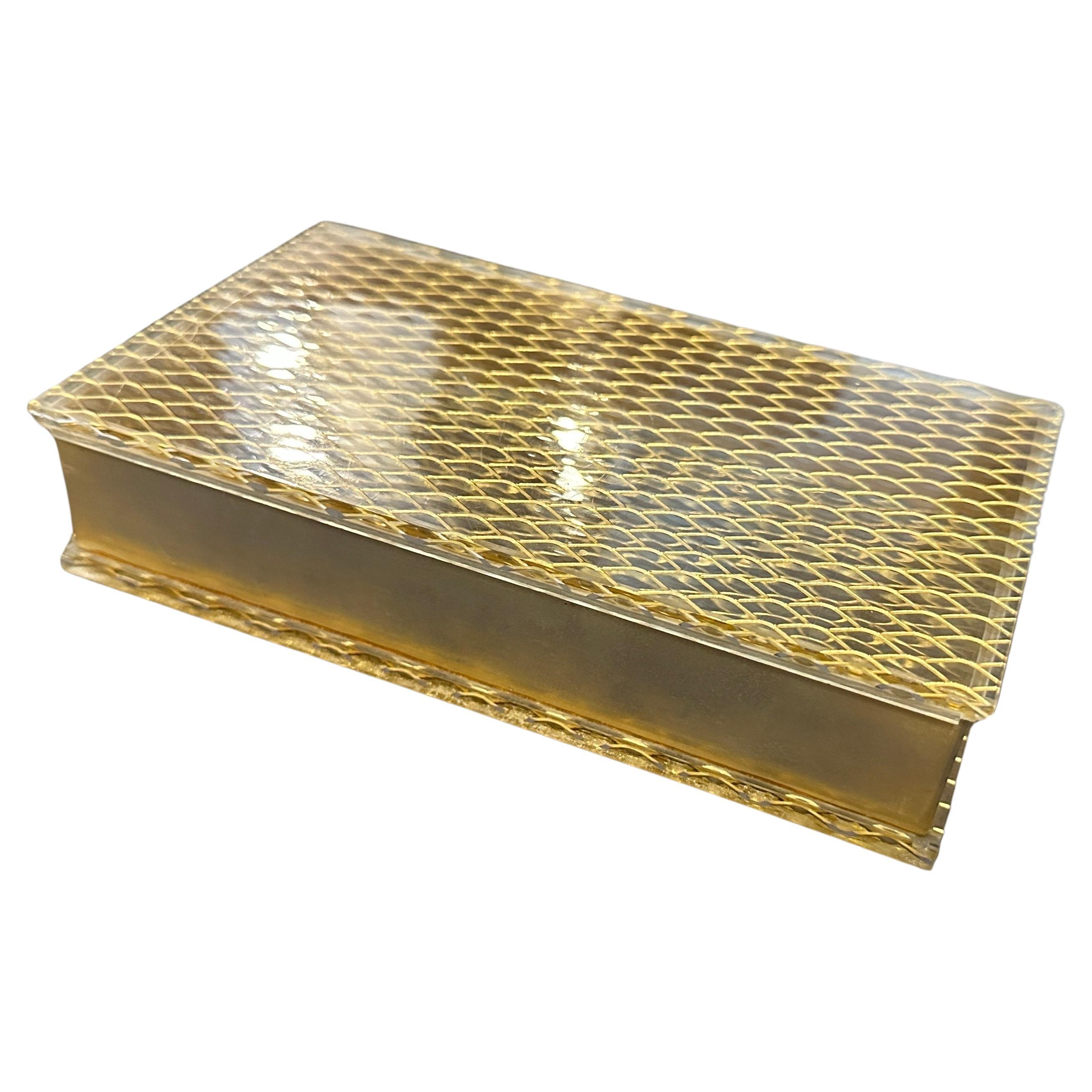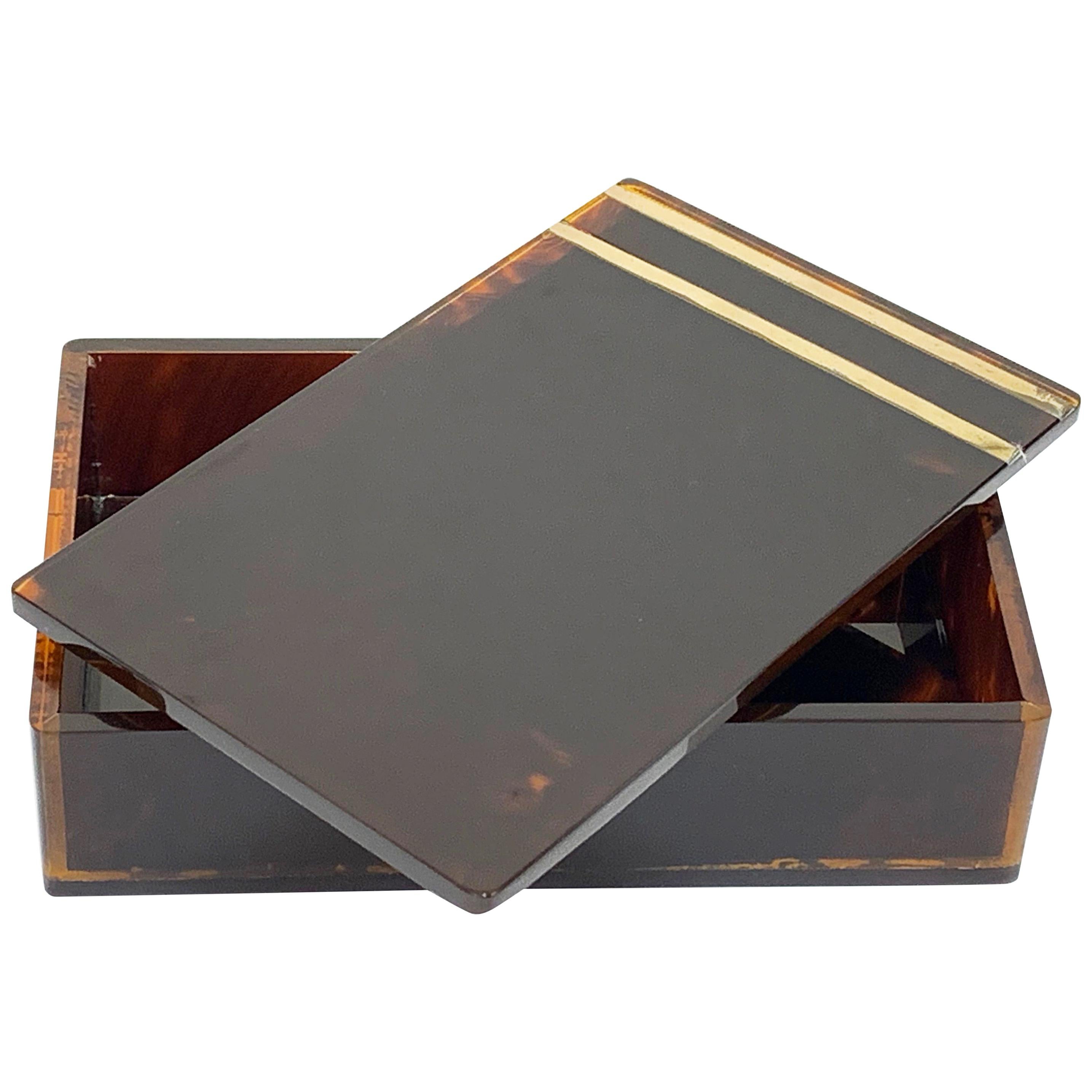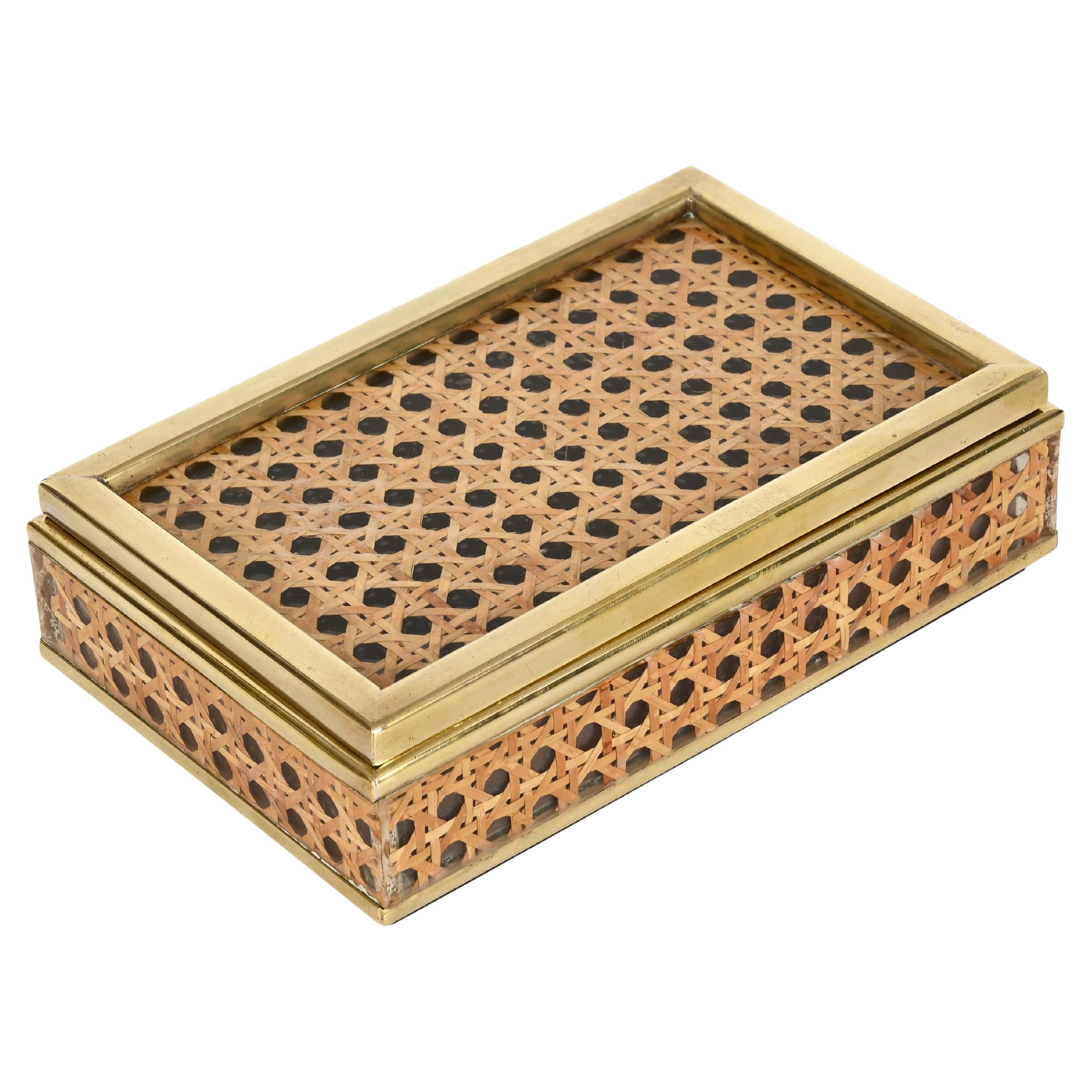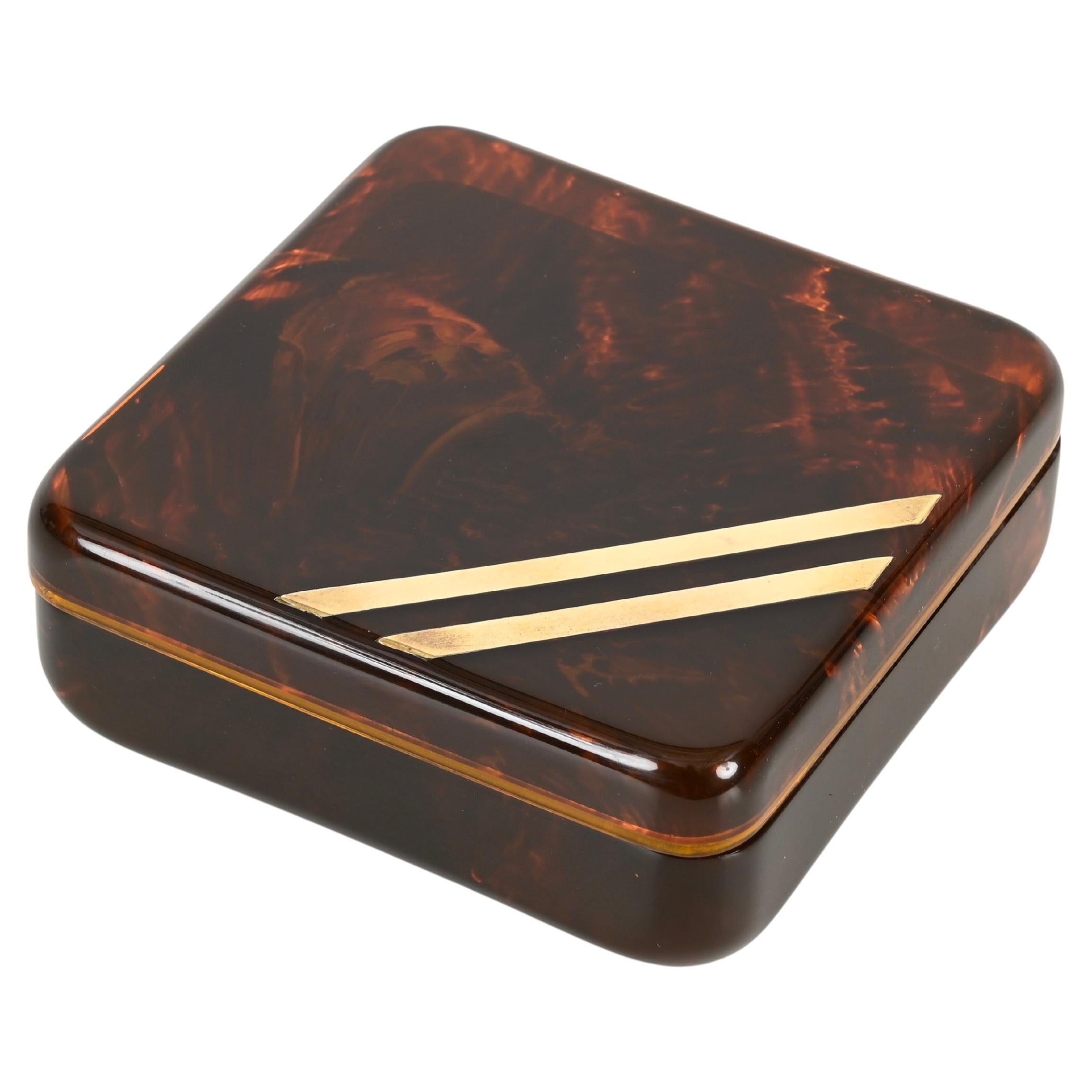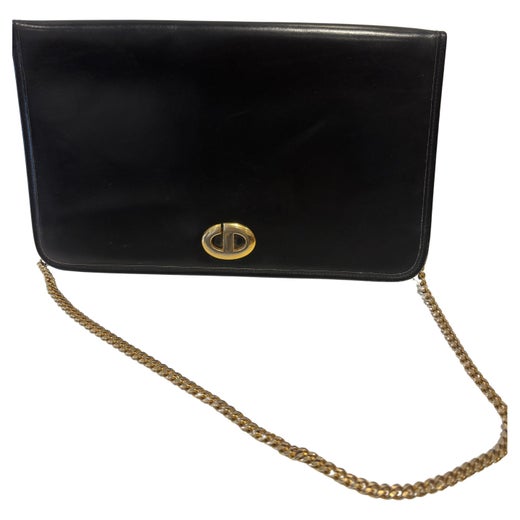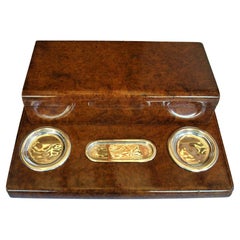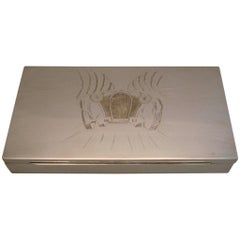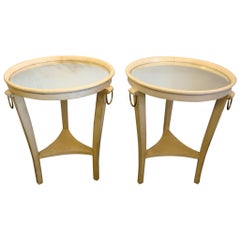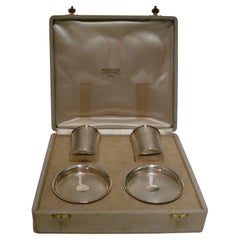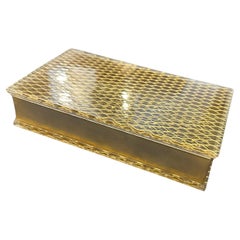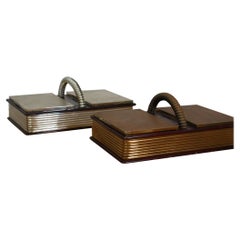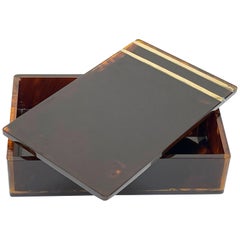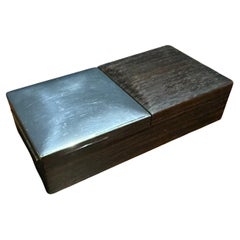Christian Dior Table Vesta Gilt Boxes for Matches, France 1950´s
About the Item
- Creator:Christian Dior (Designer)
- Dimensions:Height: 1.19 in (3 cm)Width: 4.14 in (10.5 cm)Depth: 3.15 in (8 cm)
- Sold As:Set of 2
- Style:Mid-Century Modern (In the Style Of)
- Materials and Techniques:
- Place of Origin:
- Period:
- Date of Manufacture:1950s
- Condition:Replacements made: The Carboard inside has been changed. Wear consistent with age and use.
- Seller Location:Buenos Aires, AR
- Reference Number:1stDibs: LU2027327330292
Christian Dior
When Christian Dior launched his couture house, in 1946, he wanted nothing less than to make “an elegant woman more beautiful and a beautiful woman more elegant.” He succeeded, and in doing so the visionary designer altered the landscape of 20th century fashion. Vintage Dior bags, shoes, evening dresses, shirts and other garments and accessories are known today for their feminine and sophisticated sensibility.
Dior was born in Granville, on the Normandy coast, in 1905. His prosperous haute bourgeois parents wanted him to become a diplomat despite his interest in art and architecture. However, they agreed to bankroll an art gallery, which Dior opened in 1928 in Paris with a friend.
This was the start of Dior’s rise in the city’s creative milieu, where he befriended Pablo Picasso and Jean Cocteau. After seven years as an art dealer, Dior retrained as a fashion illustrator, eventually landing a job as a fashion designer for Robert Piguet, and in 1941, following a year of military service, he joined the house of Lucien Lelong. Just five years later, with the backing of industrialist Marcel Boussac, the ascendant Dior established his own fashion house, at 30 avenue Montaigne in Paris.
Just two years after the end of World War II, the fashion crowd and the moribund haute couture industry were yearning, comme tout Paris, for security and prosperity, desperate to discard the drab, sexless, utilitarian garb imposed by wartime deprivation. They needed to dream anew.
And Dior delivered: He designed a collection for a bright, optimistic future. “It’s quite a revolution, dear Christian!” exclaimed Carmel Snow, the prescient American editor-in-chief of Harper’s Bazaar, famously proclaiming, “Your dresses have such a new look.” The press ran with the description, christening Dior’s debut Spring/Summer haute couture collection the New Look. “God help those who bought before they saw Dior,” said Snow. “This changes everything.”
Dior’s collection definitively declared that opulence, luxury and femininity were in. His skirts could have 40-meter-circumference hems, and outfits could weigh up to 60 pounds. They were cut and shaped like architecture, on strong foundations that molded women and “freed them from nature,” Dior said. Rather than rationing, his ladies wanted reams of fabric and 19-inch waists enforced by wire corsets, and the fashion world concurred. The debut got a standing ovation.
In the subsequent decade, Paris ruled as the undisputed fashion capital of the world, and Christian Dior reigned as its king. With the luxuriously full skirts of his New Look, suits and his drop-dead gorgeous couture dresses and ball gowns worthy of any princess, Dior gave women the gift of glamour they’d lost in the miserable years of war.
On 1stDibs, find an exquisite range of vintage Christian Dior clothing, jewelry, handbags and other items.
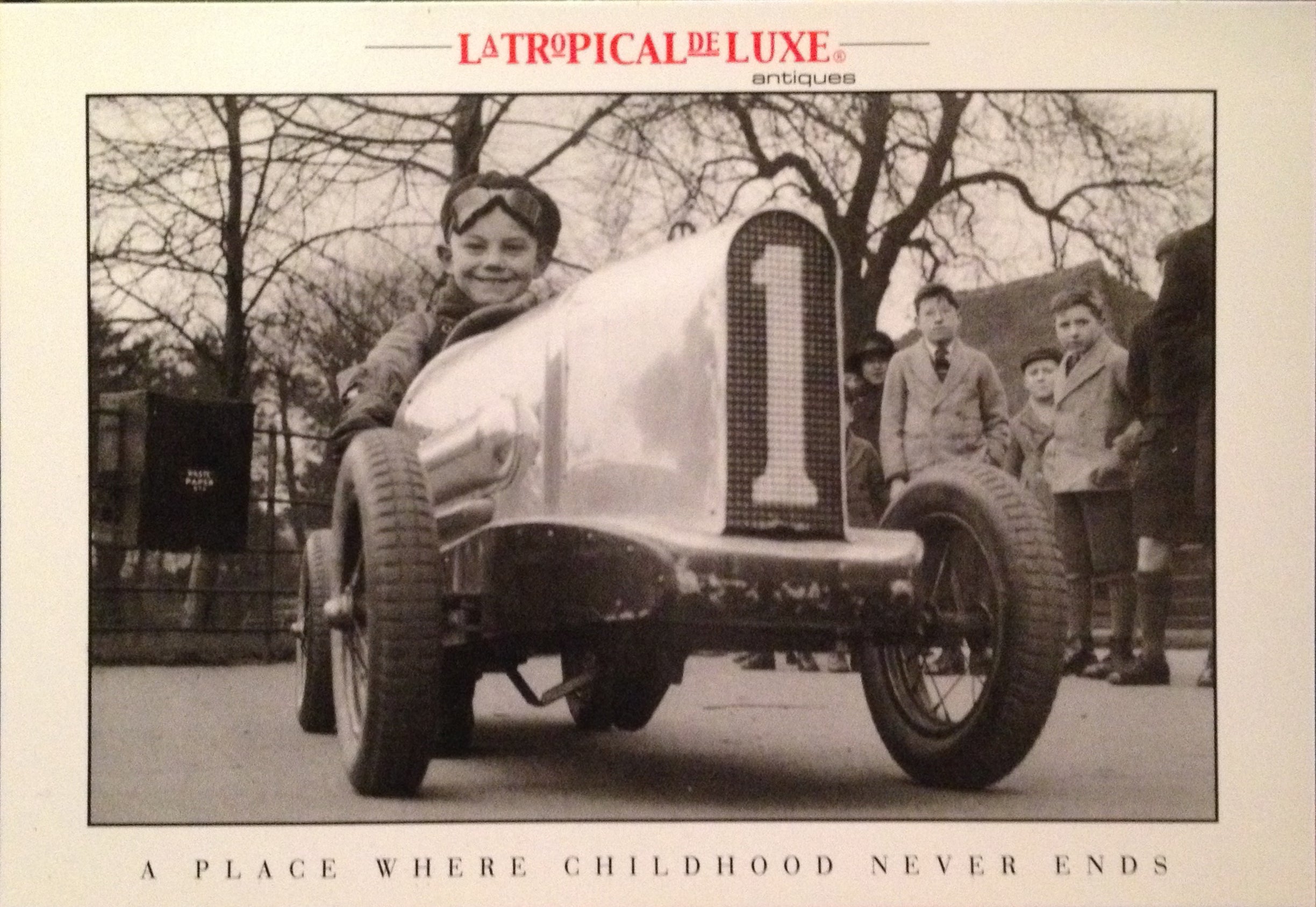
- ShippingRetrieving quote...Shipping from: Buenos Aires, Argentina
- Return Policy
More From This Seller
View AllMid-20th Century French Art Deco Tobacco Accessories
Metal, Sterling Silver
Vintage 1930s French Art Deco Tobacco Accessories
Vintage 1930s French Art Deco Side Tables
Brass
Mid-20th Century French Art Deco Tobacco Accessories
Silver
Early 20th Century British Art Deco Tobacco Accessories
Sterling Silver
Early 20th Century Austrian Vienna Secession Tableware
Brass, Copper
You May Also Like
Late 20th Century Italian Mid-Century Modern Jewelry Boxes
Brass
Mid-20th Century Italian Mid-Century Modern Tobacco Accessories
Metal
Vintage 1970s French Mid-Century Modern Decorative Boxes
Brass
Vintage 1950s Austrian Mid-Century Modern Decorative Boxes
Metal
Vintage 1970s Italian Mid-Century Modern Decorative Boxes
Brass
Vintage 1970s French Mid-Century Modern Decorative Boxes
Brass
Read More
Jonathan Anderson Makes His Dior Debut with an Audacious Menswear Collection
Andy Warhol and the fashion house’s first collections were among the creative director’s inspirations.
Too Soon for the Return of ’90s Fashion? As If
There's a renewed appreciation for the era's aesthetic, perhaps most notably among millennials seeking authentic, easy style.
